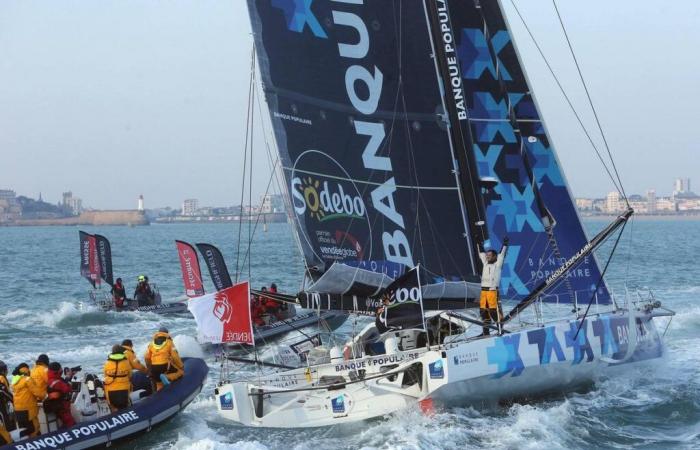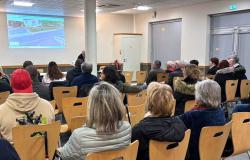UA thrill runs through the fleet: this sailor plans to complete his world tour in 67 days, one week less than Armel Le Cléac'h's record at the end of the 2016-2017 edition (74 days, 3 hours, 35 minutes ). He is so confident that he only takes 67 days of food! It was Alex Thomson, at the start of the last Vendée Globe in 2020, and he was not the only one to talk about a possible crazy performance over the 45,000 km round the world race.
From 68 to 66 days said Michel Desjoyeaux (winner in 2001 and 2009), less than 70 for François Gabart (winner 2013), and in theory “63 to 64 days if everything comes together perfectly” according to architect Guillaume Verdier . In the end, Alex Thomson did not finish the Vendée, the first ones finished in 80 days, more than Le Cléach, more even than François Gabart in 2012-2013 (78).
The potential of the boats has increased, the probability of breaking the record even more
And this year? Before the departure on November 10, “the technical data brings us to a possible time of 65 days for new boats”, updates Jean Le Cam, like many other skippers. “We can improve. By how much, I don’t know,” says Yannick Bestaven cautiously. The potential time would not have changed much (65 against 67), “but the probability of improving the record, yes”, judges Antoine Koch, co-architect with Pascal Conq of two of the favorite boats, “Paprec Arkéa”, of Yoann Richomme, and “Vulnerable 1” by Thomas Ruyant.
Number effect
First reason, reliability. “In 2020, we had the first real boats with large foils (1), the technology was not yet mature,” recalls skipper Paul Meilhat. Today she is. »
“In 2020, boats had difficulty navigating rough seas. The work carried out since then has focused on this plan, carrying it in the breeze, mainly in the South Seas, explains Antoine Koch. With the multiplication of sensors installed on the appendages and the structure, skippers have more solutions to measure the constraints on the boat and adapt navigation. »
In 2020, Yannick Bestaven won with small foils, his winning bet, when the big foilers had all arrived diminished, patched up like “Apivia”, with Charlie Dalin. We can imagine the scenario of 2013 and 2017 at the finish line: a modern monohull, not too diminished, and a reduced journey time.
Best everywhere
The advantage is coupled with a number effect. “There are more boats with large foils, twenty compared to four in 2020, including thirteen new ones. Obviously, it’s one of these boats that will win,” calculates Paul Meilhat. Be careful, however, warns Antoine Koch, “the boats are stronger in general but undergo greater stress because they go faster. For example, upwind in heavy seas and 25 knots of wind, a very demanding pace, we went from 12-13 knots to 16-17 speed. »
The skippers will also be better
In addition to the boats, the skippers will also be better underlines Antoine Koch. “They have progressed in the settings of the boats, those of the new ones and those of the previous generation, thanks to the work on the sails and the foils. Due to Covid four years ago, the boats had sailed very little in the race, around ten days plus the Vendée Arctic. There, the overall level of preparation is much higher. »
The sailor will cope better with the efforts. “For Thomas and Yoann, we worked on the active comfort of the skipper in the design of the boat, which means, for example, that across the breeze, they can continue to attack when the others are already in an uncomfortable position. Passive comfort has also progressed, that is to say the skipper's position, with tailor-made seats, all controls within reach. »
In the end, with the same weather conditions as in 2020, “the skipper-boat pairs would undoubtedly go faster. We designed Vulnerable and Paprec Arkéa, so that they are pleasant in strong winds, so that they make you want to go around the world, even if they are less efficient upwind and in the medium Atlantic. . But during the preparatory deckchairs, we made the very pleasant discovery that they also perform well in these conditions. »
“The problem is that there are waves in the sea, that’s annoying!” » Jean Le Cam
However, the memory of 2020 calls for caution. “We saw it again in training recently: the sea state greatly limits the speed of the boats on paper,” underlines Yannick Bestaven. We cannot go faster than the terrain allows us.” “It’s magical when you see all the beautiful images of flying boats on flat seas. The problem is that there are waves in the sea, that’s annoying! », agrees Jean Le Cam, who built a new boat, but without foils. Also take into account the actual distance traveled! The higher the ice limit is in the South, the longer it will be.
(1) In 2016, small foils were installed on classic hulls, for straight fins.






